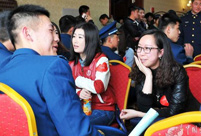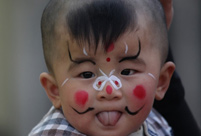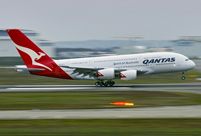 'Model husband' shatters image of love
'Model husband' shatters image of love
 Can animals smile? Or put on a happy face
Can animals smile? Or put on a happy face
 Geng Xuan crowned at 9th China Super Model Contest
Geng Xuan crowned at 9th China Super Model Contest
 Top 10 billionaires in the liquor industry
Top 10 billionaires in the liquor industry
 Backstage at China Fashion Week
Backstage at China Fashion Week
 Ballerinas anywhere but onstage
Ballerinas anywhere but onstage
 Top 10 safest airlines in the world
Top 10 safest airlines in the world
 Posters of 33rd HK Film Awards unveiled
Posters of 33rd HK Film Awards unveiled
 Top 10 most popular instant messaging apps in the world
Top 10 most popular instant messaging apps in the world
 Inspiring shadow images of Chinese army
Inspiring shadow images of Chinese army
A senior Chinese academic has urged Japanese politicians to face up to the historical facts of the Nanjing Massacre, the subject of an increasingly high-profile spat between China and Japan.
Zhu Chengshan, curator of the Nanjing Massacre Memorial Hall and head of a research association on the atrocity, said on Thursday that the 1937 massacre was a "fact with ironclad evidence" and that its existence has been acknowledged by the international community.
His remarks followed Chinese President Xi Jinping's recent trip to Germany, where he commented on Japan's military aggression in China and referred to 300,000 people having been killed in the massacre. Xi also said more than 35 million Chinese soldiers and civilians were killed or injured as Japanese militarists waged war against China.
Japan lodged a protest with the Chinese government over Xi's comments.
China and Japan have been at odds over the number of victims in the Nanjing Massacre.
China insists that more than 300,000 civilians and soldiers died in the massacre, which began on Dec. 13, 1937 and lasted for six weeks, while Japanese historians and politicians call that number into question.
However, the Chinese figure was confirmed by the International Military Tribunal for the Far East and the Nanjing War Crimes Tribunal, according to Zhu.
More than 190,000 Chinese soldiers and civilians were captured and shot dead in groups by Japanese soldiers, and another 150,000 people died in random killings and their bodies were collected by charities, the Nanjing War Crimes Tribunal concluded.
According to the International Military Tribunal for the Far East, Japanese invaders killed more than 200,000 civilians and soldiers in Nanjing, excluding those whose remains were cremated or dumped in the Yangtze River.
A Japanese military officer identified as Ota Hisao confessed that 150,000 bodies were dumped in the Yangtze or cremated, said Zhu.
China's top legislature has set December 13 as a national memorial day for Nanjing Massacre victims. Previously, memorial services were mostly limited to the province of Jiangsu, where Nanjing is located.
 Wonderful moment of China's airborne forces
Wonderful moment of China's airborne forces Bai Baihe shoots for fashion magazine
Bai Baihe shoots for fashion magazine Red terraced fields in Dongchuan of Yunnan
Red terraced fields in Dongchuan of Yunnan Jiaju Tibetan Village
Jiaju Tibetan Village Spring dating
Spring dating Confucius institute at UC Davis
Confucius institute at UC Davis Little painted faces at temple fair
Little painted faces at temple fair Top 10 safest airlines in the world
Top 10 safest airlines in the world Foreign students at China-Myanmar border
Foreign students at China-Myanmar border The backstage of the Fashion Week
The backstage of the Fashion Week College students in Han costumes
College students in Han costumes Postgraduate works as waitress
Postgraduate works as waitress Life in a Lahu village in Yunnan
Life in a Lahu village in Yunnan An orphan’s wedding
An orphan’s wedding Hollywood documentary brings Diaoyu Islands truth to new audience
Hollywood documentary brings Diaoyu Islands truth to new audienceDay|Week|Month